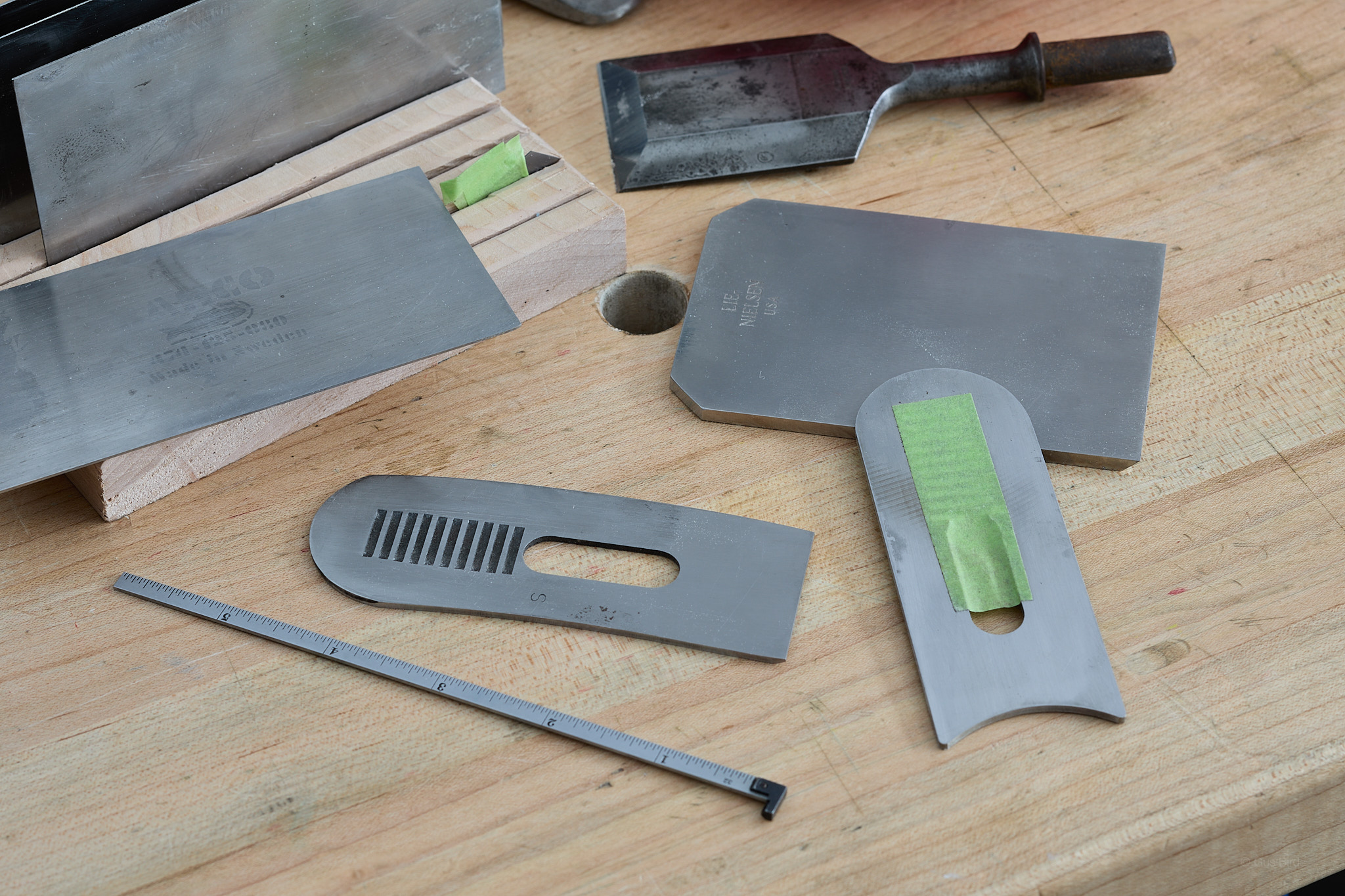Heavy Scrapers for Woodworking
Heavy scrapers are invaluable tools in the fine woodworking shop, especially when working with dense hardwoods or dealing with complex grain that defies the smooth finish left by planes and sandpaper. Unlike thin card scrapers, which are flexible and better suited to delicate work or final smoothing, heavy scrapers provide the rigidity and mass needed to remove material more aggressively and with greater control. This discourse outlines the principles, methods, and considerations in making heavy scrapers tailored for serious woodworking applications.

Heavy scrapers made from old Stanley block plane blades.
Purpose
At their core, heavy scrapers serve as a bridge between planing and sanding. They can remove tear-out, glue squeeze-out, and even mill marks without the fuzziness of sandpaper or the potential for gouging that comes from improper planing. Their rigidity means they don't flex over uneven surfaces, making them ideal for leveling panels or tackling highly figured wood such as curly maple, walnut burl, or quilted cherry.
The philosophy behind a heavy scraper is durability, control, and efficiency. It is not a throwaway or easily blunted tool, but one that can be tuned, sharpened, and relied upon for years—if not decades—of hard use.
Material Selection
A well-made heavy scraper begins with proper material:
Steel Type: High-carbon tool steel (such as O1 or A2) is preferred. These steels hold a fine edge and can be hardened to a degree that supports repeated burnishing without rolling or crumbling.
Thickness: Unlike card scrapers (typically 0.4–0.8 mm thick), a heavy scraper should range from 1.5 to 3 mm (1/16" to 1/8"). This provides stiffness and weight, allowing the user to scrape aggressively without the tool flexing.
Size and Shape: Rectangular blades are most common (e.g., 50 mm x 150 mm), but one may also consider curved edges or bevels for working in hollows or across grain.
Hardening and Tempering
If crafting from raw steel stock:
Heat Treating: Heat the steel to a cherry-red color (approximately 1450°F for O1) and quench in oil.
Tempering: Reheat gently to a straw-yellow color (\~375°F) to relieve brittleness while preserving edge-holding hardness.
Surface Prep: Flatten and polish the surfaces on a stone or with sandpaper adhered to a flat surface.
Sharpening and Burnishing
Sharpening a heavy scraper differs subtly from a card scraper:
Beveling: Some woodworkers grind a slight bevel (10–15°) on one or both edges, then hone it flat on a fine stone.
Burr Creation: Use a hardened burnisher to roll a fine hook on the edge. The key is to keep the hook subtle—it’s not a chisel; it’s a cutting burr.
Maintenance: A well-prepared burr can last several hours of use. Once dull, the edge can be re-burnished several times before re-sharpening is necessary.
Handles and Mounting
Some heavy scrapers are mounted into custom wooden or metal holders that resemble plane bodies. This reduces hand fatigue and improves control:
Wooden Bodies: Crafted like a handplane with a sole and a bedding angle (usually 45°–60°), these holders allow for consistent scraping angles and pressure distribution.
Metal Holders: Commercial models such as the Stanley #80 or Veritas scraper planes can be mimicked or modified to fit homemade scraper blades.
Alternatively, a simple handle attachment on either end of the scraper can aid grip and reduce heat transfer to the fingers.
Applications and Technique
When using a heavy scraper:
Hold Firmly: Two hands, pushing with moderate pressure. Don’t overbear; let the burr do the work.
Scrape at an Angle: Slight skew (10–15°) to the grain reduces resistance and produces cleaner shavings.
Inspect Shavings: A properly sharpened heavy scraper will produce thin, curly shavings—not dust.
Use Cases:
* Smoothing highly figured woods post-planing
* Leveling guitar binding
* Removing finish or oxidation without sanding away detail
* Final surfacing before finish application
Maintenance and Longevity
Store the scraper in a dry, protected place. A light coating of camellia or mineral oil prevents rust. Periodic honing of the edges and re-burnishing ensures continued performance.
Conclusion
Making and mastering a heavy scraper is an investment in craftsmanship. It rewards patience with performance—producing surfaces that feel hand-polished and glow under finish. As machines become more precise, and sandpaper ever more ubiquitous, the heavy scraper remains a testament to tactile skill and traditional control. It reminds us that in woodworking, sometimes, the old ways cut the cleanest.